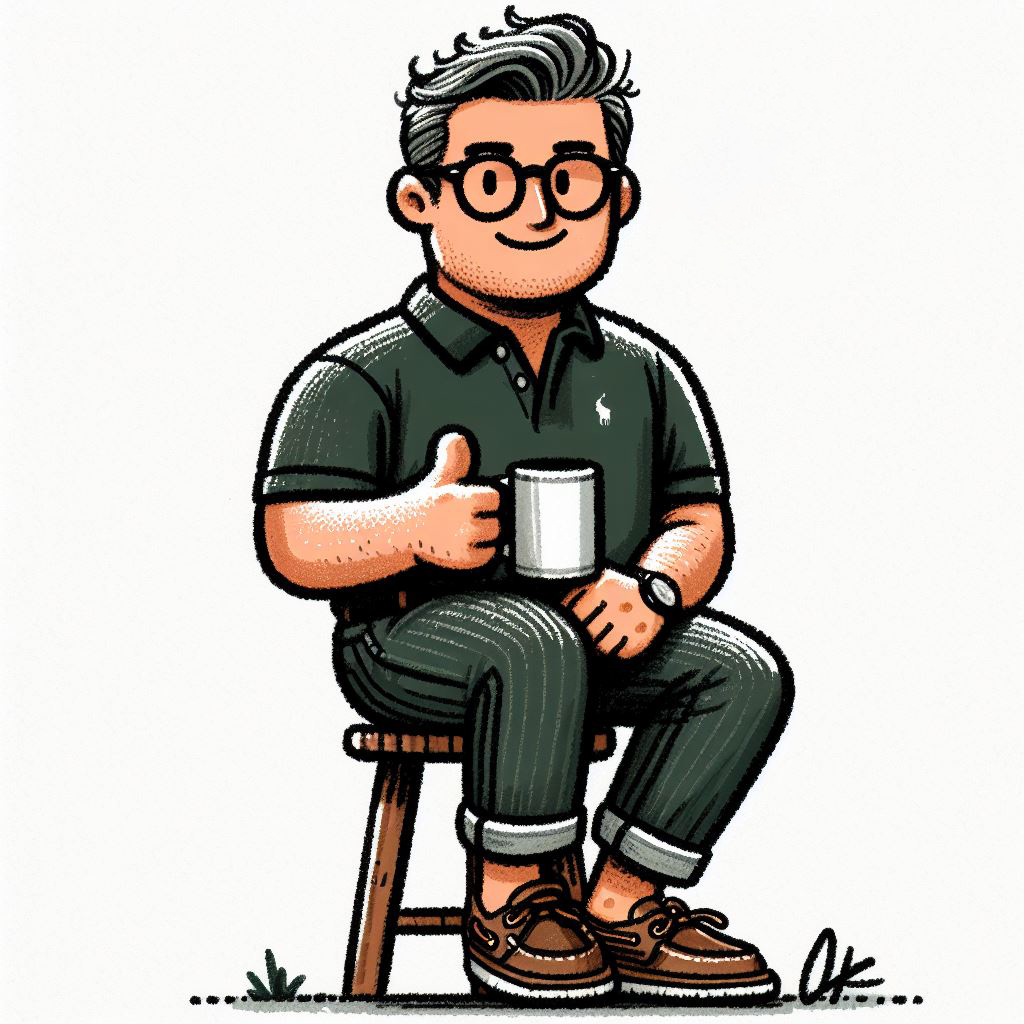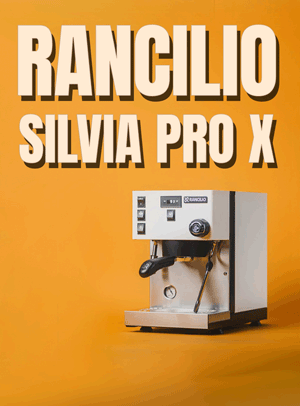When I first got intrigued by espresso, it was 1990 and I was in Milan, Italy. I just fallen in love with the idea of cafe culture and the cafe lifestyle in France, and when I hit Italy during my long tour of Europe after University, I found more of that most excellent cafe culture but something more: coffee that didn’t suck.
I’d had plenty espresso while in France, but it was what I always thought espresso was up to that point: bitter, tiny, wince inducing, but a jolt of caffeine. Black as hell.
Hitting my first cafe in Milan was an eye opener. I saw actual crema for the first time (though it was most likely blond in colour). I smelled something other than the usual skunk aroma that the overly dark roasted French shots offered up – I smelled heavenly coffee. And while I did add sugar to those first shots in Milan, I found I didn’t need to – or didn’t need to as much. This was bonafide espresso, and I was experiencing it for the first time. It was an epiphany.
Throughout the 1990s, I grew to love espresso. I visited my first Starbucks in 1993, at the corner of McKenzie and West Broadway in Vancouver, and had a most amazing shot and cafe experience. (ed.note 2021: That Starbucks is long gone now).
I bought a Gaggia Baby with some of my student loan when going to UBC for my Masters degree. I did at the time have my coffee ground at a local Italian cafe (a place on West 4th near McDonald in Vancouver), but soon graduated to a Saeco burr espresso grinder. Those were my halcyon espresso days, and very fleeting: I had to sell both in my second year to buy food and pay rent!
By 1998, I was working on my business life and starting to make some minor dollars so I bought a brand new (to market), never really seen before machine – a Rancilio Silvia. Soon after I paired it with a Rancilio Rocky. And within six months, I had over 20,000 words online (with heaps of photos) explaining the espresso brewing process to anyone who cared to read it. And many did.
I can remember one particular instance in my espresso progression quite well. I found that if I roasted my own coffee and if I aged the roast just right (about 4 days), I was able to get shots of espresso showing 100% crema in a shot glass while the shot brewed. I’d never seen that before, nor been served that before. And fine tuning my grind and tamp technique showed I could eek more out of the coffee – darker, richer crema; tiger flecking on the shots; more viscosity to the beverage.
I remember this well because I posted about it to alt.coffee back in 1999, and several people within that group called my description of 1cm crema, 1 inch of crema, full crema in the shot glass “exaggerated”, so I had to post video and photos to prove it all. That really got this group’s gears turning on espresso and crema production in a shot.
I also coined the phrase “Guinness Effect” to describe the gas bubble action that settling crema has. A lot of folks in alt.coffee could identify with that, since most of them had seen a glass of Guinness beer poured and how the foam could go from 100% of the glass to settling on the top.
I mention all of this to provide you with some background. Most of the exciting espresso development has moved to a group-sourced kind of system thanks to the Internet, and alt.coffee was the hotbed. And I also mention it all, because by 2000, 2001, we certainly thought we knew a lot about espresso. We felt we were absolutely bleeding, cutting edge. After all, the entire PID revolution in temperature control was born out of that group (a bunch of amateurs, lead by Andy Schecter and Greg Scace – here’s Schecter’s earliest mention of using a PID on his 3 week old Silvia). Scace and Schecter were not professionals, not hot shot baristas, not roasters, but home enthusiasts with strong engineering backgrounds who just loved espresso.
However, this is what our shots looked like at the time:
Not too bad, but certainly not stellar.
In 2003, I attended my first ever World Barista Championship (WBC). I have some video floating around on a DVD somewhere of the final six from that competition. I remember being there, thinking this was the best espresso I’d ever seen brewed or tasted. Watching the videos only 6 years later, I remember thinking how bad the shots look and how most of them would probably be dumped by me today.
My point is simple. In 1999, we thought we knew everything about espresso. But we didn’t. In 2003, we thought we had hit high pinnacles of espresso excellence. We had not even come close. In 2006, we felt temperature control was the top of the top, and it couldn’t get any better. We were wrong.
And in 2010, there’s a common belief that we’re pulling some of the best espresso we’ve ever had (that is mostly true), but also a belief that we’ve somehow perfected the art.
In 2015, talk to me and we’ll reminisce about how we knew so little five years ago.
So it appears that I lied to you a bit – this article’s title is Espresso 2010, but I have written very little about where espresso is at today. I’m going to save the bulk of it for the followup article (published in the next few days), but I do want to touch on one thing – single origin coffees as espresso.
Single Origin Espresso
Single origin has been all the rage for the last three years or so in the world of espresso. What is single origin? It is — simply put — one type of bean from one area of one farm (sometimes called a microlot) roasted one way.
If the coffee is from a collection of farms, it is not single origin. If the coffee is from the same farm but roasted several ways and post blended, it is not single origin. If the coffee is from a country with no other information, it is not a single origin.
Many in the world of coffee and espresso have fallen in love with the concept of single origin espresso: some for the fact it really highlights individual farmers and their styles of growing; others for how much easier it is to identify specific tastes and nuances in a roast that rarely changes shot-to-shot.
Me? I’ve become known as a single origin hater. While “hate” is a strong word, I do admit that single origin espresso frustrates me (a good thing!) but also bores the crap out of me (a bad thing), even though not a week goes by when I don’t try one or two single origin roasts as espresso to try and find something intriguing, exciting, innovative. I’ve been trying now for half a decade and to quote U2, “still haven’t found what I’m looking for”.
I used to sensationalize quite a bit about coffee and espresso back in the day, but these days II tend to take a long view on most things in coffee. I am not so much concerned about what the hot button topic of the moment is; instead, my views on coffee and espresso tend to focus on what will be just as palatable five years from now, or what will work even better in the future. I also like studying cause and effect, and I see one big cause for all this single origin craze that many may not be talking about. Interestingly enough, its the same cause for some of the other “blazing hot” trends in coffee.
It’s the whole trend of what’s old is new again. Or put another way, people with a much bigger voice these days (thanks to the Internet) who are relatively new to coffee are discovering things for the first time and believing they are the be-all, end-all of coffee and espresso (not them – the trends they write about).
Case in point: pourover coffee. Okay, this article is not about non-espresso brewing methods, but have you noticed a huge trend in the last few years pushing chemex, pourover, even press pot as the second coming(s)? I blame it on the Internet, and the constantly changing, young and supercharged coffee professional using tools.
The same thing’s happening in espresso and single origin. There are many enthusiastic young guns in coffee who cut their teeth with espresso and using espresso blends, never really starting off with auto drip or press pot or other non espresso methods. When they discovered single origin via espresso, it presented something different to them, and many got excited about it all. They would tweet, blog, video, present the whole works.
“Nice argument Mark, but I should remind you that single origin espresso has won and/or placed in the final six at the last three WBCs!”
Well that is true. But I blame the prominence of well-placing single origin blends at the WBC (and the United States Barista Championship (USBC) etc) on simplicity and the requirement to explain specific flavours in every shot of espresso at a competition. I don’t believe that its a situation where a single origin tastes better or intrigues more than a well crafted blend. To explain further – in competitions, it is very important for a barista to nail every flavour descriptor in the shot they are serving judges. A blend is a cacophony of flavours and tastes: every shot can potentially taste different. A blend is also more homogeneous and where you are better served describing a blend as “caramel, chocolate, tropical fruits”, a single origin can be hypothetically described as “grapefruit, 80% bitter chocolate”.
Is that a good thing? In competitions it sure is. But what I think many people lose focus on is what the potential of espresso can be. I absolutely, firmly believe that espresso is the epitome of brewing methods. Nothing tortures the coffee bean more while presenting a potential for a taste experience that drip and brewed coffee cannot touch. In my mind at least, espresso brewing has the potential to take coffee to a completely different atmosphere when it comes to taste.
Many find espresso too frustrating though. And it is – it is one of the most frustrating things in all of coffee. The only thing that may be more frustrating is the art of creating a truly masterful blend of beans and roast styles to brew as espresso. I see some people – both industry veterans and industry newbies – give up on espresso because it is just so frustrating. And in those folks who give up, I see a path, a trend that is very often identical:
- they go from brewing blends and being frustrated that not every shot is perfect (or shots mute flavours they tasted in a cupping);
- they move onto single origins where they can get more control and more locked in flavours;
- then on to drip, pourover, other non espresso brewing methods because hey, they get more or less the same flavours they do from their single origin espresso shot pulls.
That is the rub. Single origin espresso is simple. Simple in repeatability, and simple in taste (in my opinion, of course). Even so, simplicity in espresso is still damned difficult and frustrating and there’s one other thing – espresso brewing tends to obliterate delicate flavours and accentuate more forward, prominent notes.
This has another cause and effect: someone will put a coffee on the cupping table (or in a press, or on a Clover, or in a siphon brewer) and taste various notes in the flavours. They then put the coffee in the espresso machine and notice that some flavours pop while others disappear, and get frustrated all over again with the brewing method.
That is where the big problem is – espresso demands a well crafted blend to avoid these things. A well crafted blend is a combination of coffees that together are greater than the parts. A master roaster and blender finds coffees that play off each other and play well in the schoolyard. Coffees that accentuate flavours. Coffees that hide other coffees defective notes (that otherwise would be amplified in single origin espresso shots, like too much acidity or too thin body). Coffees that work together to create not only new flavours but flavours that change as the shot develops and cools.

This is really where I have my hate-on for single origin espresso. Not so much for how it tastes or what it is, but more because of what secondary effect it has: with so many roasters getting on board with the entire single origin “craze”, the art of the master blender roaster is fading quick. Roasting single origin espresso is easy. Crafting a roast blend where every bean is a premium one, and every style of bean is massaged and tweaked to work well with the other beans in the blend is bloody difficult. If you were a roaster, which road do you think you’d pick?
I see it in the most famous roasters in the US: famous “blends” are turning into single origin styles; blends that had a very specific taste profile when they were invented and first loved have turned into a flavour of the month where it always changes. I’m not talking about subtle changes like going from caramel-forward chocolate to chocolate forward caramel; I’m talking about going from caramel chocolate low acidity, to spritzy, lip-pursey bright all fruit.
There’s only two roasters that I know of in North America (picking from the relatively small number of internationally famous true specialty coffee roasters) who I still think pay utmost attention to the art of the blend, and I’ll be happy to name them: 49th Parallel (Epic Espresso) and Stumptown (Hairbender). I’m not a huge fan of Hairbender’s taste profile, but I will say this: they work damned hard to maintain the taste profile it is famous for, completely changing components from time to time just to maintain it. That takes some serious roasting and master blender skill.
Epic from 49th? I’ve had better espresso over the years, but no one has been more consistent overall in taste than 49th has been with their blend – Epic has a taste profile and they constantly change the formula to maintain it. Again, that takes massive skill.
(If I left out roasters from this list, it’s either because a) I’m ignorant of them, or b) I don’t believe they belong on this list – but please feel free to share your thoughts in the forum comments).
The loss of development in the art of crafting a superior espresso blend is one of the reasons I dislike single origin espresso so much, but believe it or not, there are more reasons. In my followup article, I’ll be getting more into the state of espresso in 2010 where I touch on pressure profiling, temperature profiling, and even more on blending and single origins.
























